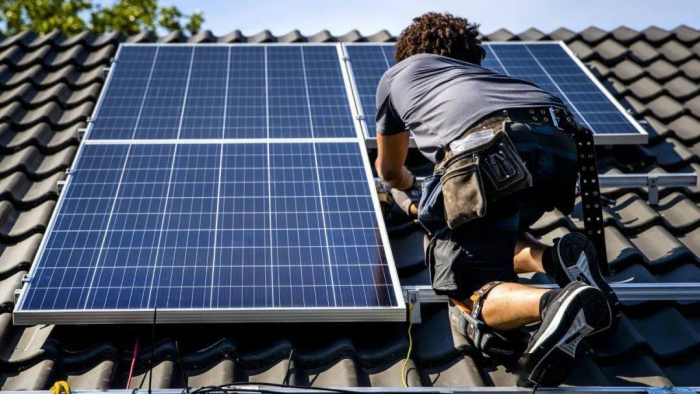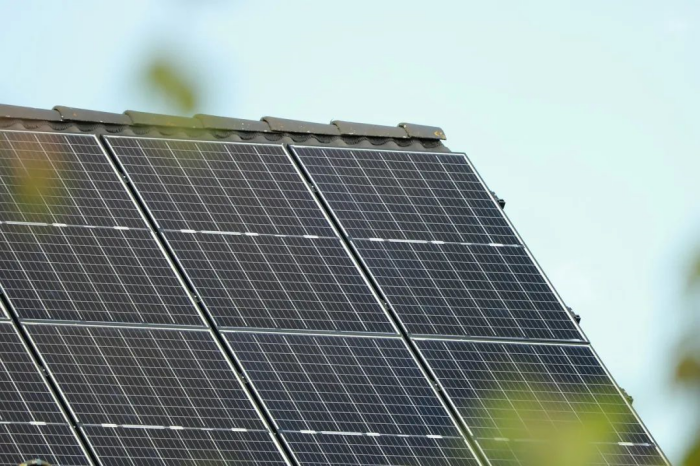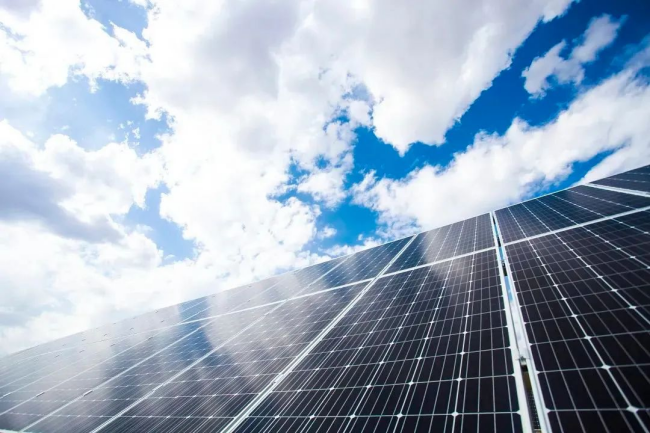In 2022, solar photovoltaic power generation will account for 7.3% of the total electricity generation of EU countries. The Netherlands is the country with the highest proportion of photovoltaic power generation among EU countries.
A few days ago, the Dutch Enterprise Administration, a subsidiary of the Dutch Ministry of Economic Affairs, released the latest forecast that in 2023, the installed capacity of solar photovoltaic power generation in the Netherlands is expected to reach 3.3 GW, and the installed capacity will exceed 3 GW for three consecutive years. By the end of 2023, the cumulative installed capacity of solar photovoltaic power generation in the Netherlands will reach 17.6 GW, and the power generated will meet about 1/6 of the country's electricity demand.
Ember, a British climate energy think tank, pointed out that in recent years, the proportion of solar photovoltaic power generation in the Dutch power structure has increased significantly, from 1% in 2015 to 14% in 2022. In 2022, solar photovoltaic power generation will account for 7.3% of the total power generation of EU countries, and the Netherlands is the country with the highest proportion of solar photovoltaic power generation among EU countries, and will undoubtedly become the new leader in the field of solar photovoltaic power generation in Europe.

Solar Photovoltaic power generation exceeds coal power for the first time
According to data released by the Dutch Central Bureau of Statistics, in 2022, the proportion of renewable energy power generation in the Netherlands will reach 40%, an increase of 8% compared with 2021, while fossil fuel power generation will decrease by 11% year-on-year. Among them, solar photovoltaics play an important role. In 2022, the Netherlands' renewable energy power generation will reach 47 billion kWh, more than half of which will come from solar photovoltaic power generation. Solar photovoltaic power generation will account for 14% of the total power generation, exceeding the proportion of coal-fired power generation for the first time.
It is understood that at present, the Netherlands is one of the six European countries with the most serious greenhouse gas emissions, and the energy transformation pressure is huge. In recent years, the Netherlands has attached great importance to the development of the renewable energy industry, and the increase in solar photovoltaic power generation has been rapid.
Some Dutch media pointed out that the Dutch government hopes to reduce carbon dioxide emissions in the energy sector by expanding the application of solar photovoltaic power generation, while achieving the goal of reducing dependence on imported energy. In terms of price, by 2022, the economics of solar photovoltaic power generation in the Netherlands will already be higher than that of fossil fuel power generation. Solar Photovoltaic power helps the Netherlands fill the fossil fuel power generation gap to a certain extent.
According to the current goal, by 2030, renewable energy power will supply more than 70% of the electricity demand in the Netherlands, of which solar photovoltaic power generation is the main force. Netbeheer, a Dutch grid operator, believes that under the above-mentioned goals, the installed capacity of solar photovoltaic power generation in the Netherlands will maintain a strong growth momentum in the future. In the latest report, the company gave a more specific long-term forecast. It believes that by 2050, the cumulative installed capacity of solar photovoltaic power generation in the Netherlands will reach the range of 100 GW to 180 GW; Watts increased by 55 GW, an increase of more than 40%.

Policy adjustments help change the role of solar photovoltaics
In order to ensure the continuous growth of installed capacity of solar photovoltaic power generation, the Netherlands has written the development goals of solar photovoltaic power generation into law, and promised to limit oil and gas drilling activities and increase green spending to stimulate market activity. According to public information, in 2022, the Netherlands will spend 13 billion euros on the renewable energy industry.
In addition to high financial support, the Netherlands is also creating a better business environment for the solar photovoltaic industry by adjusting its dividend policy. In February of this year, the Dutch House of Representatives approved a legal proposal submitted by Energy Minister Rob Jeten to phase out the current net metering scheme for solar photovoltaic power generation in the future.
It is understood that the net metering plan has always been the main policy supporting the growth of solar photovoltaic power generation installed capacity in the Netherlands. The plan allows residential houses installed with solar photovoltaic power generation systems to sell the generated electricity to the grid and earn electricity fees. As the solar photovoltaic industry becomes more mature, the Dutch government began to adjust the selling price of photovoltaic power, resulting in a decrease in electricity fee income.
Winold van Hoover, head of the Dutch Solar Energy Association, said that the Netherlands' continued implementation of the net metering plan will hinder the development of the solar photovoltaic power generation market and drag down the energy transition process. "It is very important to adjust the policy in a timely manner according to the development of the industry. The demand for solar photovoltaic installed capacity in the Netherlands continues to rise, and it will become an important source of electricity supply in the future. This policy change will promote a change in the awareness of the Dutch people. Solar Photovoltaic power generation is not only a financial means, but also a practical energy source. "
Expand the application scenarios of solar photovoltaic power generation
The European solar Photovoltaic Industry Association pointed out that distributed solar photovoltaics are the main force in the growth of new installed capacity of solar photovoltaic power generation in the Netherlands. At present, the average Dutch citizen owns two solar panels, and the installed capacity ofsolar photovoltaic power generation per capita exceeds 1 kilowatt, which is ahead of other European countries.
In fact, the Netherlands does not have the land resources to develop centralized solar photovoltaic power plants on a large scale. The development of distributed solar photovoltaic power plants is an important way for the Netherlands to develop solar photovoltaic power generation.
Coordinator of Dutch solar energy developer Solarfields Bernd Niren Twihal said: "The Netherlands has a small land area and high population density, and the space for developing solar photovoltaic power generation is limited. Solar Photovoltaic enterprises must make use of parking lots, churches, railway stations, etc. as much as possible. All available buildings can expand the application scenarios of solar photovoltaic power generation.”
According to Robert van der Horst, a project developer of the solar photovoltaic company TPSolar, in addition to actively developing residential and public utility construction projects, Non-ordinary scenarios such as artificial lakes, landfills, and sheep farms have become potential scenarios for the development of photovoltaic power stations in the Netherlands.
"Previously, we built an 8.9 MW solar photovoltaic power station on a landfill site, which provided green power to 2,500 surrounding households after it was put into operation. Based on the characteristics of urban construction in the Netherlands, the development of solar photovoltaic power stations in the future will show a trend of integration with other scenarios, and the development model of solar photovoltaic power generation will continue to be innovated. "
